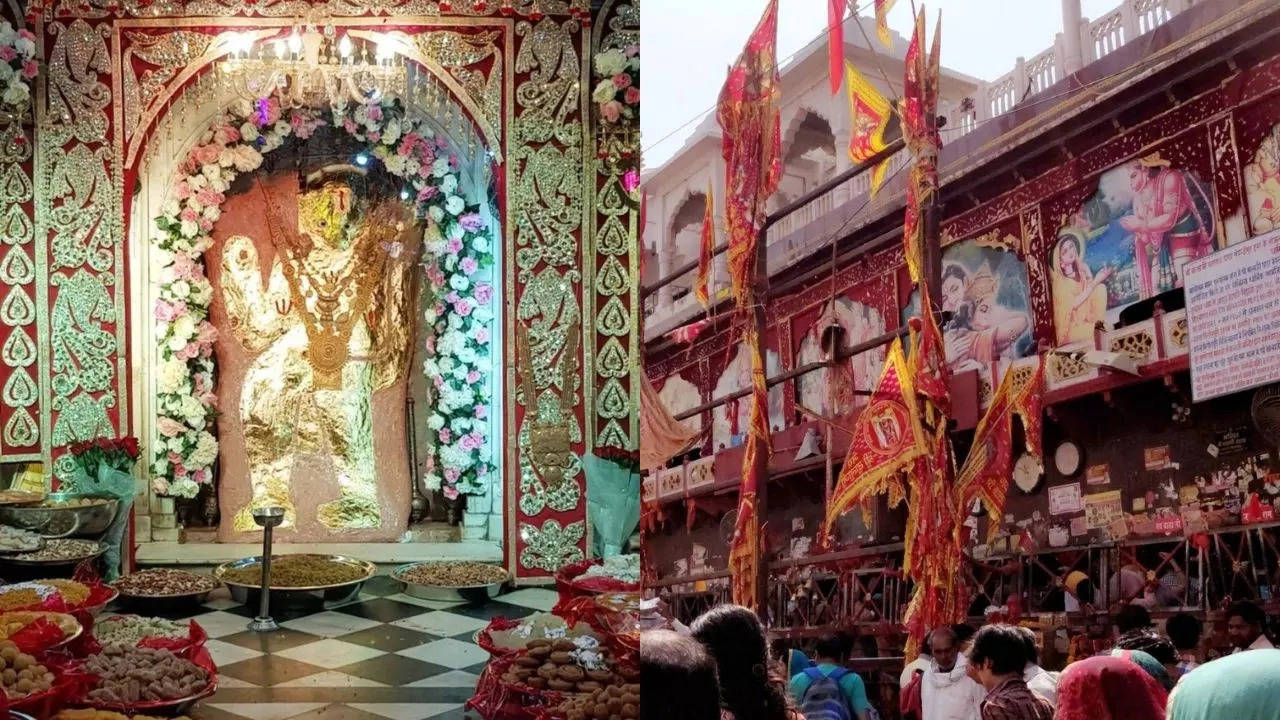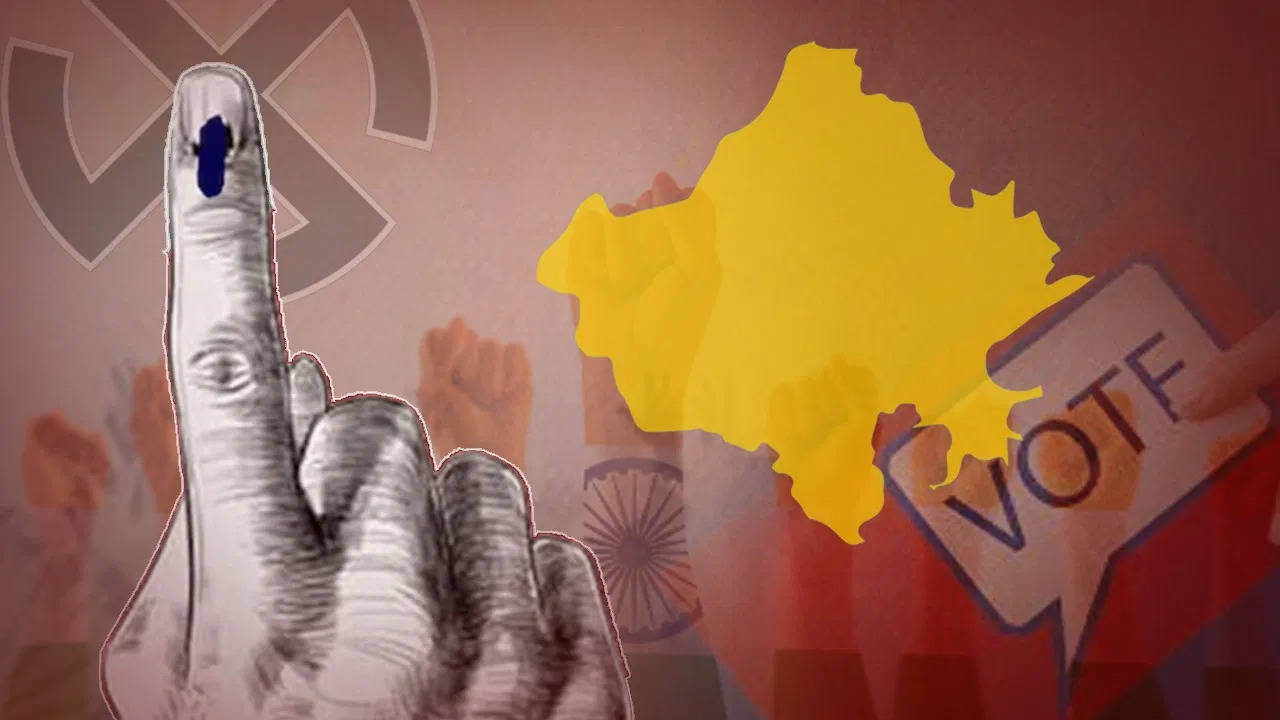Rajasthan : City Palace Jaipur is one of the most famous historical and tourist places in Rajasthan. It is a palace complex. It is located right in the middle of the ‘Pink City’ Jaipur. This beautiful complex has many buildings, huge courtyards and attractive gardens, which are a sign of its royal history.
This complex also has important buildings like ‘Chandra Mahal’ and ‘Mubarak Mahal’. Precious items from the past have been preserved here. A small part of the palace has been converted into a museum and art gallery. Thousands of tourists from all over the world come to the City Palace to see the beauty of the palace. The City Palace was built by Maharaja Sawai Jai Singh II between 1729 and 1732 AD. Royal architect Vidyadhar Bhattacharya and British architect Sir Samuel Swinton Jacob created a modern city of the twentieth century at that time. Along with this, a wonderful, beautiful royal palace equipped with all the facilities and security.
The building style of the City Palace is an incredible blend of Rajput, Mughal and European styles. The fine carvings on the stone and the paintings on the walls of these buildings made of red and pink sandstone are mind-blowing. The Kachwaha rulers had no dearth of wealth. Therefore, Maharaja Jai Singh II wanted to build a completely planned, safe, beautiful and prosperous city. The city of Jaipur was the first planned city built in the eighteenth century. Along with this, its splendor was amazing and astonishing.
Tourists reach Jaleb Chowk from ‘Badi Chaupad’ via ‘Hawa Mahal’ road and through Sirhadiyodhi gate. They can park their vehicles here. In front of Sirhadiyodhi gate is Udaipol gate for entry into the palace. From the southern gate of the Chowk, there is a gate for entry into the City Palace from Jantar Mantar’s Virendra Pol gate. Just to the right of the gate is the ticket window, where important information can be obtained along with paying the prescribed fee for entry into the palace. To the left of Virendrapol is the security guard room and to the right is the photography room. On entering from here, tourists have to pass through the metal detector security system.
This quote about Jaipur’s City Palace is correct that “There is no City Palace in the middle of the city, there is a city all around the City Palace.” The secret of this mysterious fact lies in the Vastu of Jaipur. Jaipur was established completely based on Vastu. Just as there are planets around the Sun, similarly the Sun of Jaipur is Chandramahal i.e. City Palace. Just as the Sun is the lord of all the orbits, similarly the city of Jaipur was also centered on the grace of City Palace. On the lines of nine planets, Jaipur was settled in nine blocks. These blocks are clearly visible from Nahargarh. City Palace was settled in two of these nine blocks and Jaipur city i.e. Parkota in the remaining seven. Thus, many buildings came under the purview of City Palace situated in a very large part of the city. These include Chandramahal, Surajmahal, Talkatora, Hawamahal, Chandni Chowk, Jantarmantar, Jaleb Chowk and Chaugan Stadium. Presently, the royal family resides in Chandramahal. The remaining parts have been incorporated into the city and parts of the City Palace have been converted into a museum.
On entering Virendra Pol, there is a big square, in the middle of which there is a beautiful two-storey palace. It is called ‘Mubarak Mahal’. To the right of the square is a huge clock which is visible on a square tower built on a two-storey building. Mubarak Mahal was the reception counter of that time. The officers of the City Palace administration sit on the second floor of the building, while the lower floor houses the Vastragar Museum. The museum houses the clothes of the kings, queens, princes and princesses of Jaipur. Singhpol is in the south-west corner of the square. This door opens into Chandni Chowk. There is no general movement through this door. Maharaja Sawai Bhawani Singh Gallery is to the west of Mubarak Mahal. In a verandah in the north-west corner of this square, the artists who show the famous artistic puppet show of Jaipur entertain the tourists by performing their art along with singing. There is Silahkhana in the northern upper verandah of the square. A place where arms and weapons are kept. Hundreds of types of small and big, modern and ancient weapons of the 15th century have been preserved here very carefully. The most attractive is the sword presented to Maharaja Ram Singh by Queen Victoria of England, on which the work of ruby and emerald is pleasantly surprising.
‘Sarvatobhadra’ or ‘Private Audience Hall’ is also known as ‘Diwan-e-Khas’. Two big silver pitchers kept in Sarvatobhadra are a matter of curiosity. Maharaja Madho Singh had filled them with Ganga water and taken them to England. That is why they are called ‘Gangajali’. Gangajali has a world record in the Guinness Book in the category of huge vessels made of precious metal. There is a small gate to the east of Sarvatobhadra, which leads to ‘Sabha Niwas’ or ‘Diwan-e-Aam’. This is a grand hall built for the visiting tourists.
Just south of the ‘Chandra Mahal’ is the small square of the inner palace. The four gates built in the four corners of the square display amazing artistry and craftsmanship. These are called ‘Riddhi-Siddhi Pol’. The structure of all four is the same, but the artistry is one better than the other. Mayur Dwar in the north-east of the square is mesmerizing. The murals of peacock figures and dancing peacocks on the gate are spectacular. This gate is dedicated to Lord Vishnu. Kamal Dwar in the south-east. This gate is dedicated to Shiva-Parvati. The artistry made on this gate indicating summer season provides coolness. Just opposite this gate in the south-west of the square is Gulab Dwar. Dedicated to the clan goddess of Kachwaha Rajputs. Lahariya Dwar is also called Green Gate. Lahariya is the symbol of Sawan. Green colour is the symbol of greenery and Lahariya design is the symbol of Jaipur’s culture.


